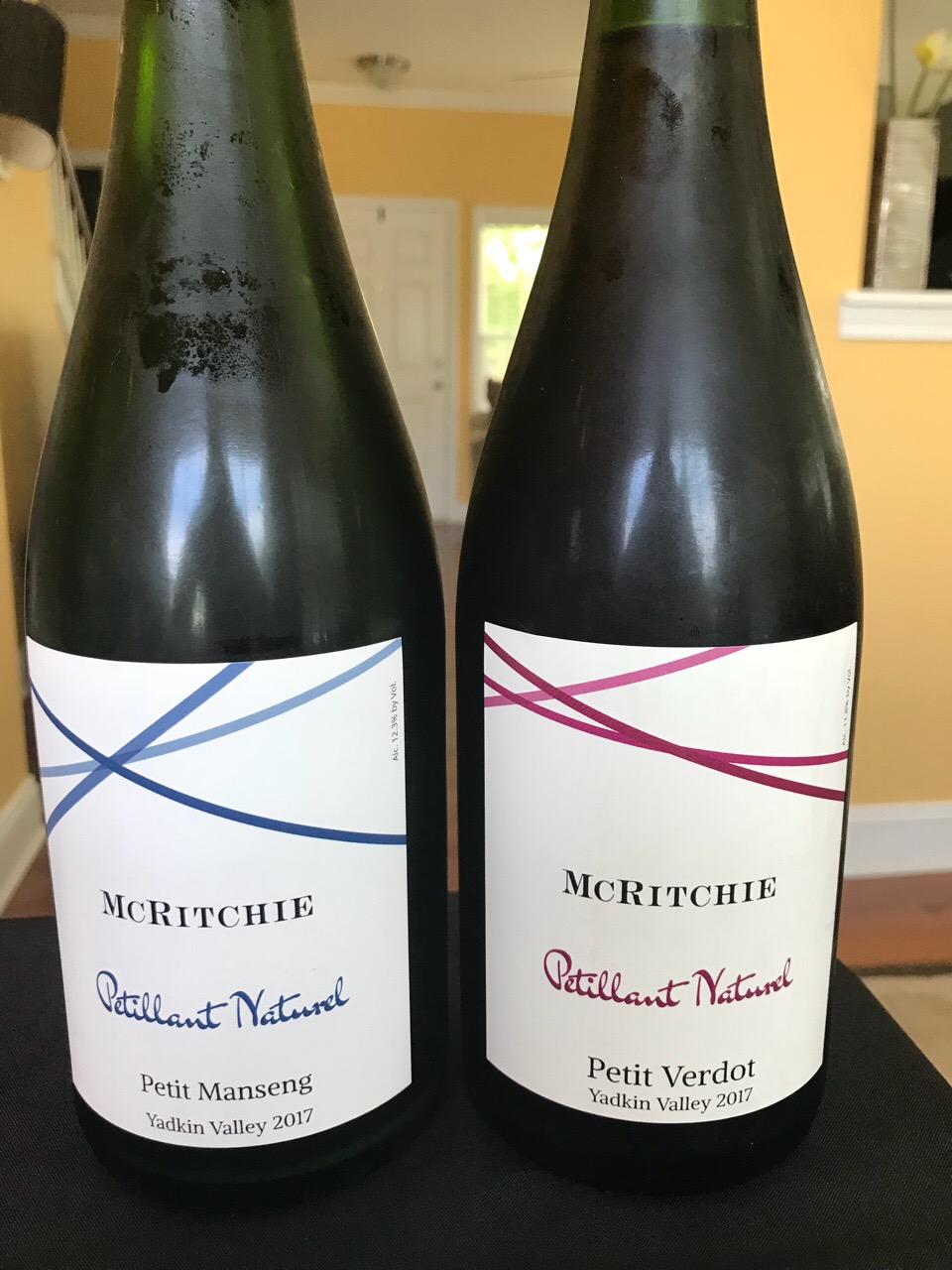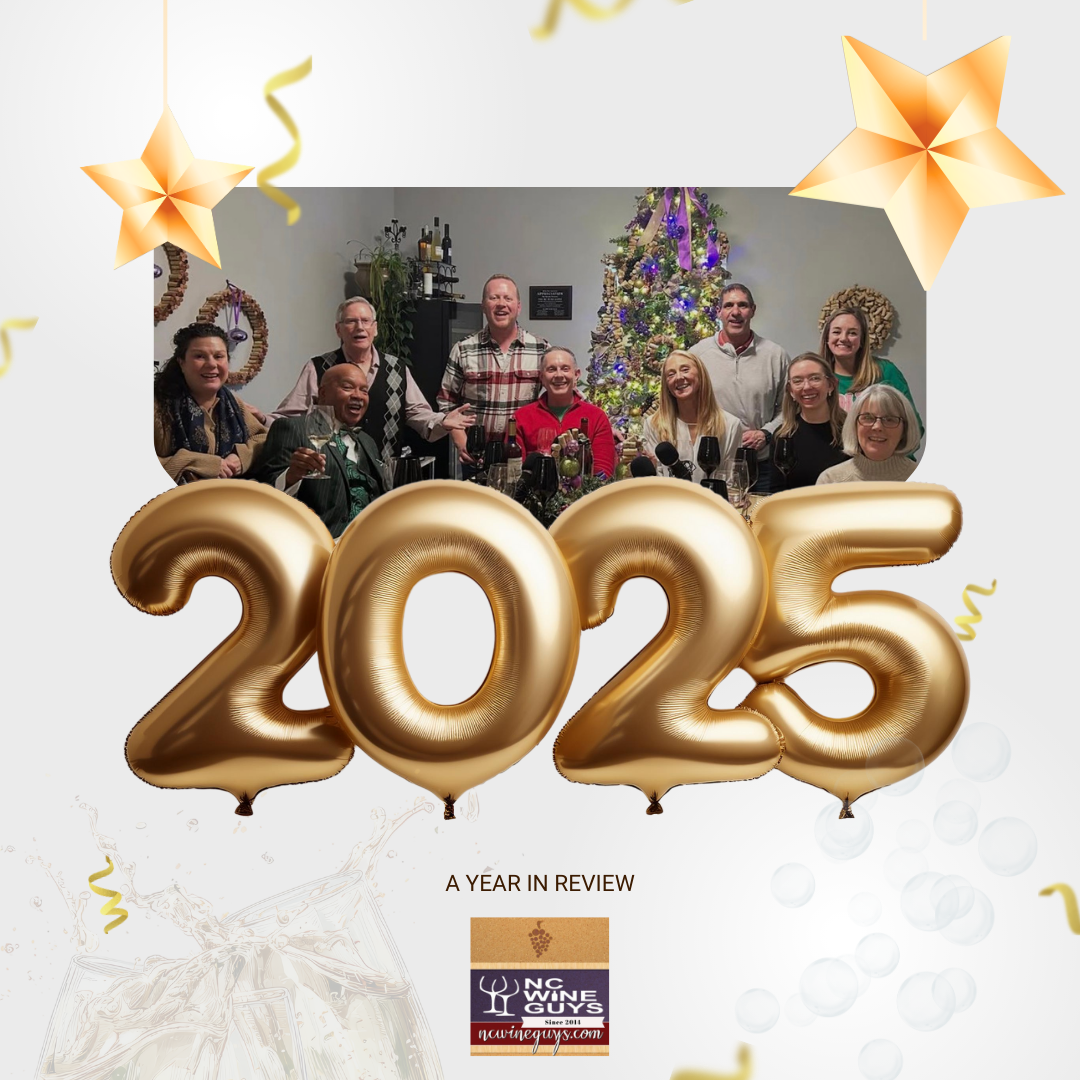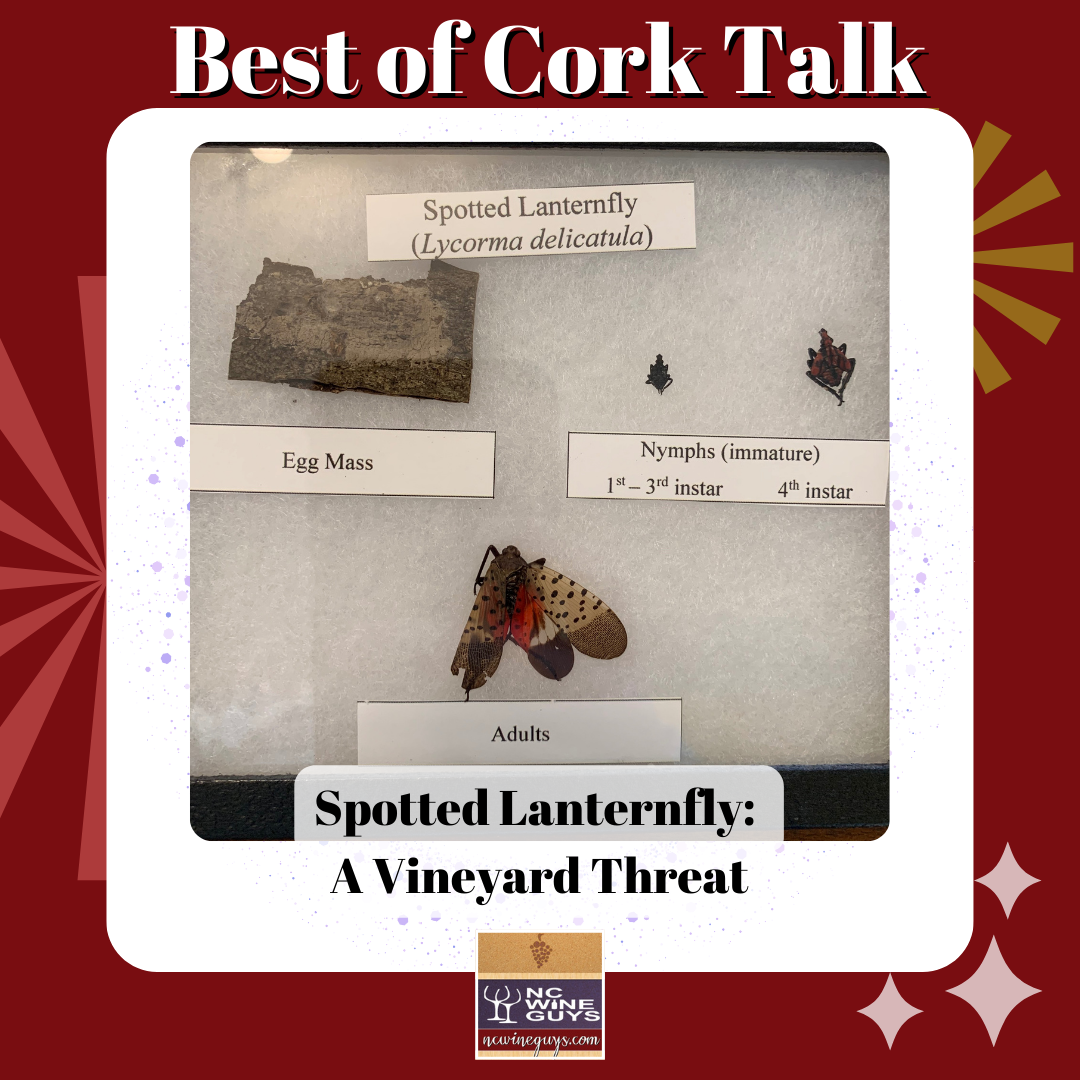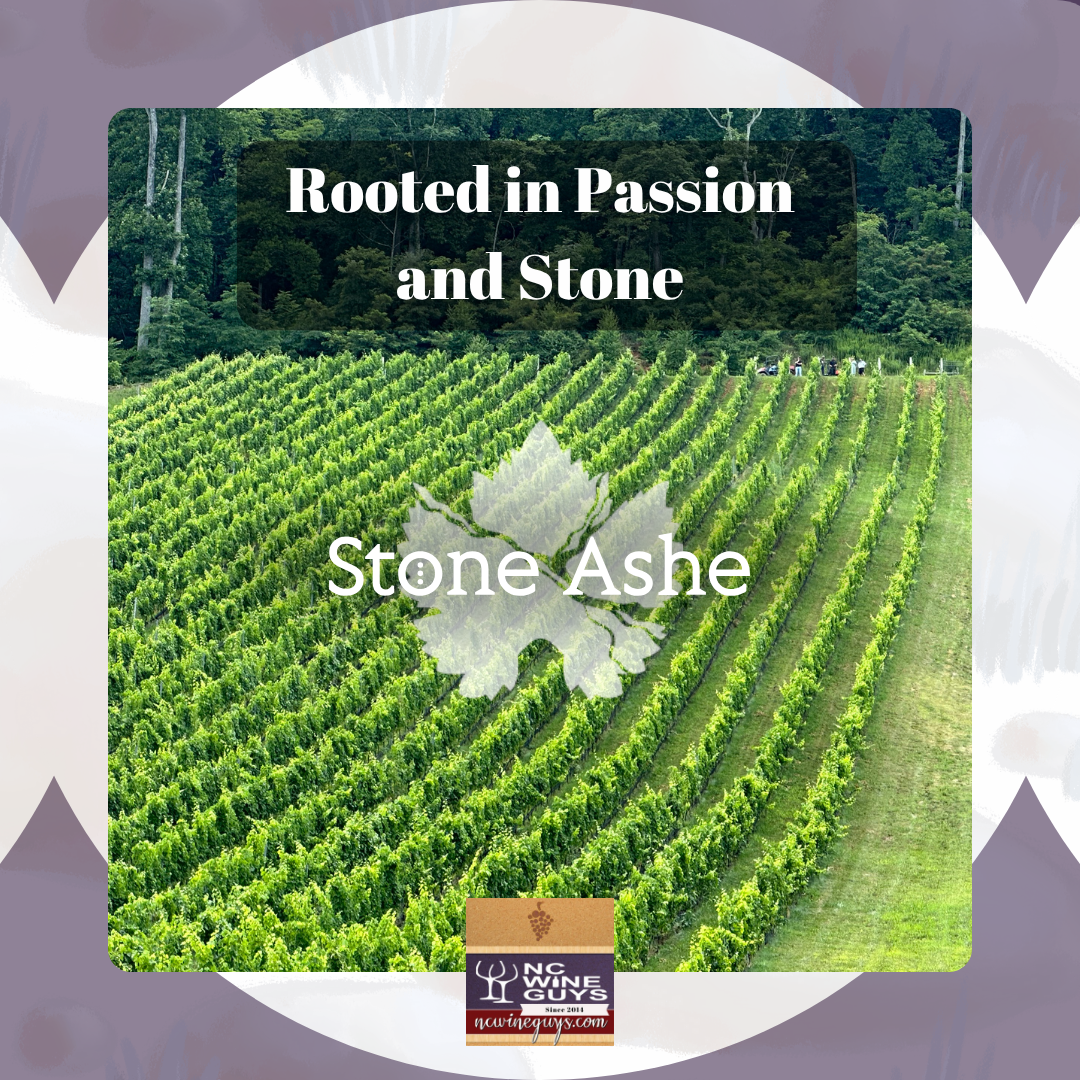We recently hosted a wine tasting with friends. Late last year McRitchie Winery & Ciderworks released two Pétillant Naturel wines for the first time. We had heard of Pét Nats, as they’re sometimes called, but we had never tasted one before. Curious and big fans of McRitchie, we purchased a bottle of each and decided to share them with friends.
When we purchased these wines, we were advised to store them upright and serve them very well chilled. We were also advised to be very careful when opening these wines and to have something to catch any wine that might come rushing out.
We reached out to McRitchie for more technical information about the wines. The Petit Manseng was harvested at 26° Brix on September 7, 2017. The Petit Verdot was harvested at 21° Brix on September 27, 2017. In both cases, the grapes were whole cluster pressed, settled and racked with no filtration or added carbon dioxide. Both were bottled with residual sugar. The Petit Verdot had skin contact but there was no barrel aging. Both wines are off dry to dry with high acidity. The Petit Manseng is a bit higher in acidity at 8 grams/Liter vs 7.8 grams/Liter for the Petit Verdot. Thirty-three cases of the Petit Manseng were produced. While forty-five cases of the Petit Verdot were produced. The Petit Manseng was bottled on September 30, 2017. The Petit Verdot was a little later on October 10, 2017. Both wines were released on November 18, 2017. We’ll cover tasting notes later in this post.
So, just how are Pét Nats made? These wines are naturally sparkling. The wine is bottled before the primary fermentation has finished. Unlike méthode champenoise, no additional yeasts or sugars are added. Since fermentation is still on-going, carbon dioxide is produced by the sugars that remain. This method is referred to as méthode ancestrale or ancient method. It produces a more simple sparkling wine that isn’t filtered. Thus the wine is usually cloudy. Pét Nats are also usually bottled with a cap rather than a cork.
Pét Nats are believed to have originated in southern France. Monks in the early 16th Century near Limoux are thought to be first producers of these type wines. (Source – Vine Pair)
Not having tasted these wines before, we also reached out to Patricia McRitchie for suggestions on pairings. She suggested pairing the Petit Manseng with salty or creamy foods. For the Petit Verdot, she suggested anything that you might pair with a Nouveau or Sparkling Rosé such as charcuterie, turkey, dishes with a little heat, or foods with a some creaminess or nuttiness. We settled on creamy artichoke dip and brie with the Petit Manseng and spicy cured sausage with the Petit Verdot.
Now for our tasting notes, we really did enjoy both of these and have since purchased replacement bottles to enjoy them again. Both were funky and interesting and a delight to drink.
2017 Petit Manseng Pétillant Naturel
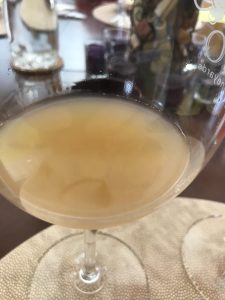
The nose was yeasty but was unmistakably Petit Manseng. The palate was also yeasty along with tangy. There was a light pineapple and grapefruit undertone.
The character was wild. It paired nicely with the creamy artichoke dip, but with brie, it was a match made in heaven! This wine tasted better with food than without.
The wine was definitely cloudy as you can see from the picture. The color reminded us of pineapple juice.
Sean McRitchie provided his tasting notes too. Sean says the flavor profile is honey and acid. It reminds him of Mountain Dew. The texture is rich with fun bubbles. The acid balance contributes to a general rich fruit dimension.
2017 Petit Verdot Pétillant Naturel
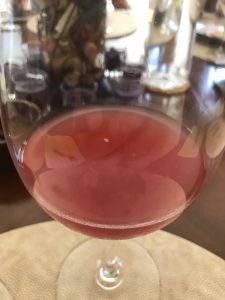
This wine’s nose was light strawberry. It was dry and sour. Some said it reminded them of a sour beer. The palate was funky and gave more strawberry flavors.
It paired nicely with the cured sausage, but it was even better without food.
This wine was also cloudy. The color was pink but nearly red. There was much more sediment with this one than the Petit Manseng.
Sean McRitchie says this wine has a flavor profile of sour candy and bright cherry. It’s foamy with high acid. There is some yeast grit as the lees are stirred. This is a fun wine that is good with an intense cheese.
We look forward to opening our second bottles of these wines. McRitchie still has a few bottles left, so if you’re interested, you should hurry to the tasting room and pick them up. They sell for $25 each. Hopefully there will be new vintages coming out later this year from the 2018 harvest!
Cheers!

